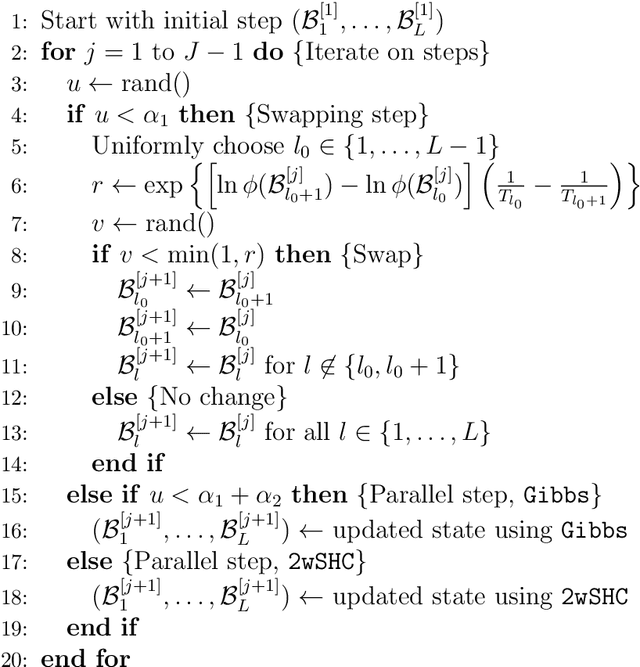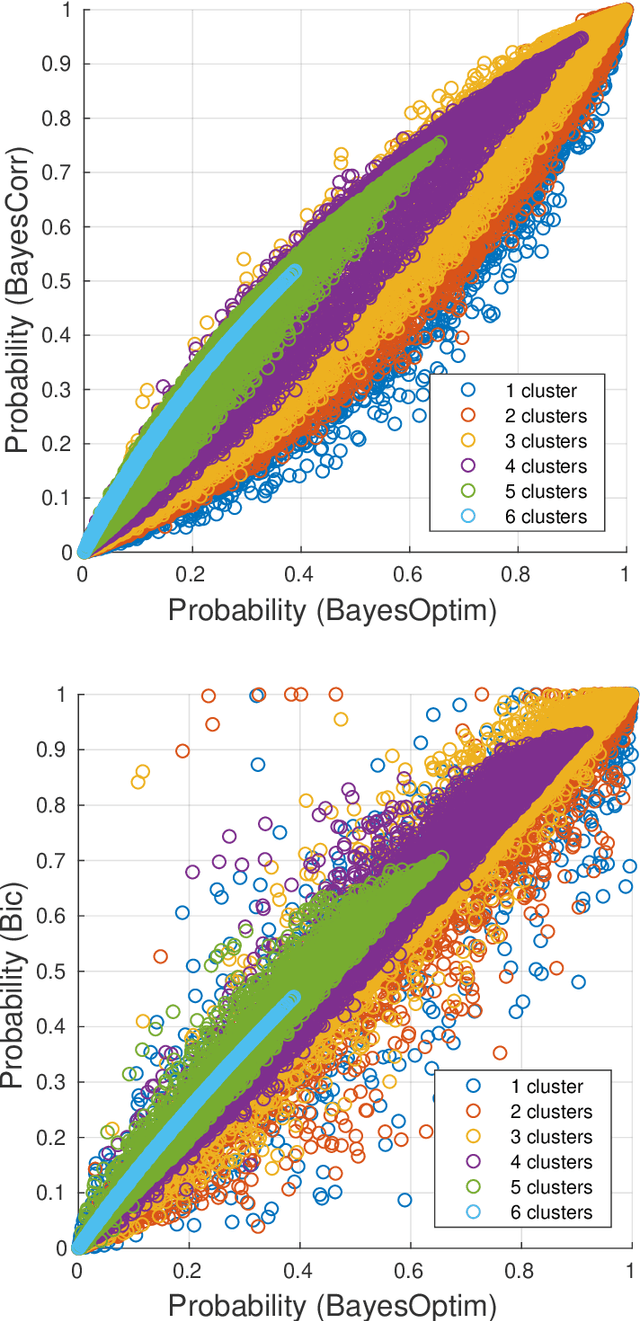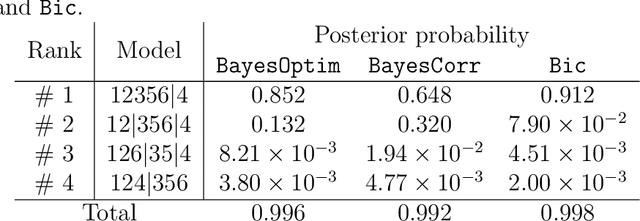Alain Giron
An inferential measure of dependence between two systems using Bayesian model comparison
Dec 10, 2024Abstract:We propose to quantify dependence between two systems $X$ and $Y$ in a dataset $D$ based on the Bayesian comparison of two models: one, $H_0$, of statistical independence and another one, $H_1$, of dependence. In this framework, dependence between $X$ and $Y$ in $D$, denoted $B(X,Y|D)$, is quantified as $P(H_1|D)$, the posterior probability for the model of dependence given $D$, or any strictly increasing function thereof. It is therefore a measure of the evidence for dependence between $X$ and $Y$ as modeled by $H_1$ and observed in $D$. We review several statistical models and reconsider standard results in the light of $B(X,Y|D)$ as a measure of dependence. Using simulations, we focus on two specific issues: the effect of noise and the behavior of $B(X,Y|D)$ when $H_1$ has a parameter coding for the intensity of dependence. We then derive some general properties of $B(X,Y|D)$, showing that it quantifies the information contained in $D$ in favor of $H_1$ versus $H_0$. While some of these properties are typical of what is expected from a valid measure of dependence, others are novel and naturally appear as desired features for specific measures of dependence, which we call inferential. We finally put these results in perspective; in particular, we discuss the consequences of using the Bayesian framework as well as the similarities and differences between $B(X,Y|D)$ and mutual information.
Automated extraction of mutual independence patterns using Bayesian comparison of partition models
Jan 15, 2020



Abstract:Mutual independence is a key concept in statistics that characterizes the structural relationships between variables. Existing methods to investigate mutual independence rely on the definition of two competing models, one being nested into the other and used to generate a null distribution for a statistic of interest, usually under the asymptotic assumption of large sample size. As such, these methods have a very restricted scope of application. In the present manuscript, we propose to change the investigation of mutual independence from a hypothesis-driven task that can only be applied in very specific cases to a blind and automated search within patterns of mutual independence. To this end, we treat the issue as one of model comparison that we solve in a Bayesian framework. We show the relationship between such an approach and existing methods in the case of multivariate normal distributions as well as cross-classified multinomial distributions. We propose a general Markov chain Monte Carlo (MCMC) algorithm to numerically approximate the posterior distribution on the space of all patterns of mutual independence. The relevance of the method is demonstrated on synthetic data as well as two real datasets, showing the unique insight provided by this approach.
 Add to Chrome
Add to Chrome Add to Firefox
Add to Firefox Add to Edge
Add to Edge